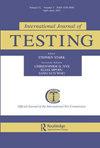Questionnaire-taking motivation: Using response times to assess motivation to optimize on the PISA 2018 student questionnaire
IF 1.4
Q2 SOCIAL SCIENCES, INTERDISCIPLINARY
引用次数: 1
Abstract
This study aims to assess student motivation to provide valid responses to the PISA student questionnaire. This was done by modeling response times using a three-component finite mixture model, comprising two satisficing response styles (rapid and idle) and one optimizing response style. Each participant’s motivation was operationalized as their probability of providing an optimizing response to questionnaire items. Overall, the model offered a good fit to the data. Results indicate that most responders were motivated to optimize, with a slight decline toward the end. Further, results showed a positive effect of questionnaire-taking motivation on PISA performance, suggesting a positive relationship to test-taking motivation. In conclusion, response times can be valuable indicators for assessing survey response quality and may serve as a proxy for test-taking motivation.问卷动机:使用反应时间来评估动机,以优化2018年PISA学生问卷
本研究旨在评估学生的动机,为PISA学生问卷提供有效的回应。这是通过使用三组分有限混合模型建模响应时间来完成的,该模型包括两种令人满意的响应样式(快速和空闲)和一种优化响应样式。每个参与者的动机被操作化为他们对问卷项目提供优化回答的可能性。总的来说,该模型与数据拟合得很好。结果表明,大多数应答者都有动机进行优化,在接近结束时略有下降。此外,研究结果显示,参加问卷的动机对PISA成绩有积极影响,这表明参加考试的动机与参加考试的动机呈正相关。总之,反应时间可以作为评估调查反应质量的有价值的指标,并可以作为考试动机的代理。
本文章由计算机程序翻译,如有差异,请以英文原文为准。
求助全文
约1分钟内获得全文
求助全文
来源期刊

International Journal of Testing
SOCIAL SCIENCES, INTERDISCIPLINARY-
CiteScore
3.60
自引率
11.80%
发文量
13
 求助内容:
求助内容: 应助结果提醒方式:
应助结果提醒方式:


